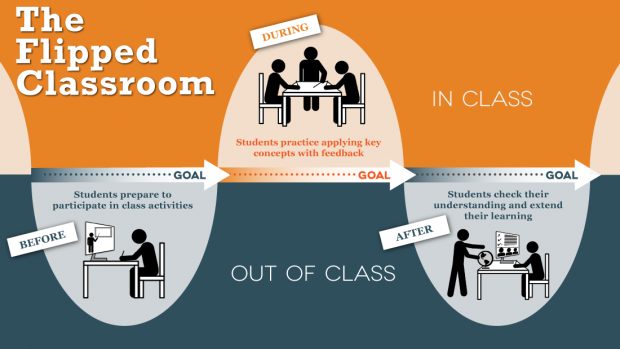University of Redlands Emergency Alert System
Alert Received: . For more information, visit: https://www.redlands.edu/alert/
University of Redlands
The goal of implementing a flipped, or "inverted", classroom is to maximize the impact of the time that faculty and students spend together in the classroom by cultivating deep learning during that time. By first exposing students to course content before class (through videos, for example), class time can be spent deepening their understanding of that content through active learning exercises.
This university-wide service consists of an initial discussion of course context and instructional objectives with ITS staff to determine why and whether to flip and, if so, where to start. The plan, once outlined, includes the design and preparation of active content and learning exercises, the development of course delivery of flipped instruction, outcome evaluation, and support in the choice of which technologies and resources to use.

Successful flipped classroom outcomes include:
How People Learn, the seminal work from John Bransford, Ann Brown, and Rodney Cocking, reports three key findings about the science of learning, two of which help explain the success of the flipped classroom. Bransford and colleagues assert that
“To develop competence in an area of inquiry, students must: a) have a deep foundation of factual knowledge, b) understand facts and ideas in the context of a conceptual framework, and c) organize knowledge in ways that facilitate retrieval and application” (p. 16).
By providing an opportunity for students to use their new factual knowledge while they have access to immediate feedback from peers and the instructor, the flipped classroom helps students learn to correct misconceptions and organize their new knowledge such that it is more accessible for future use. Furthermore, the immediate feedback that occurs in the flipped classroom also helps students recognize and think about their own growing understanding, thereby supporting Bransford and colleagues’ third major conclusion:
“A ‘metacognitive’ approach to instruction can help students learn to take control of their own learning by defining learning goals and monitoring their progress in achieving them” (p. 18).
Although students’ thinking about their own learning is not an inherent part of the flipped classroom, the higher cognitive functions associated with class activities, accompanied by the ongoing peer/instructor interaction that typically accompanies them, can readily lead to the metacognition associated with deep learning.